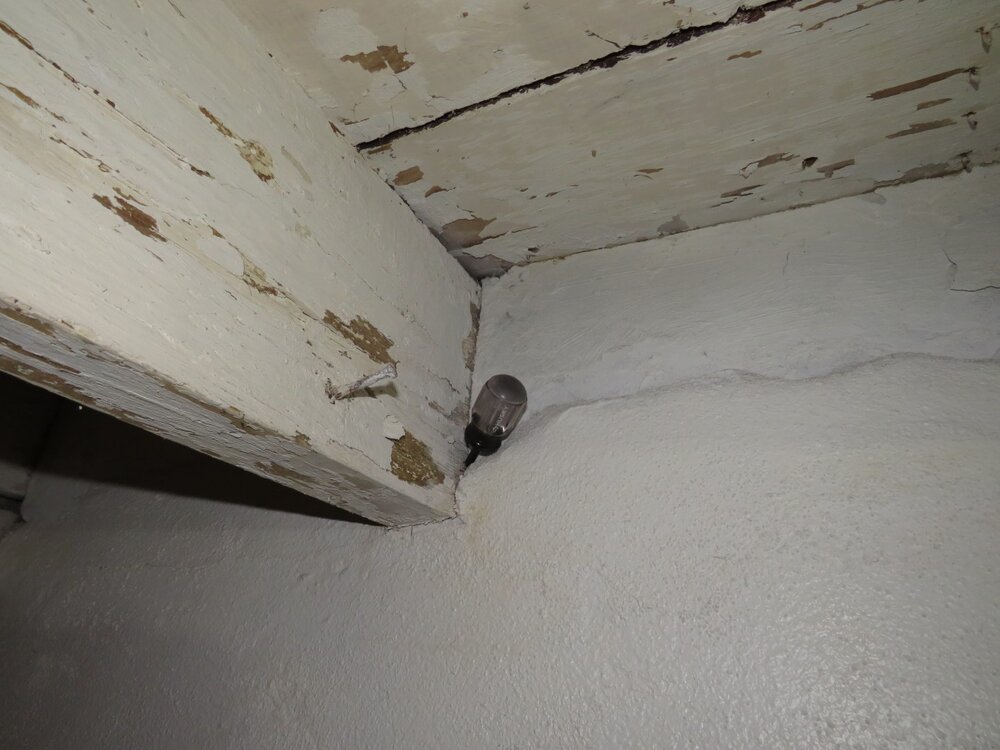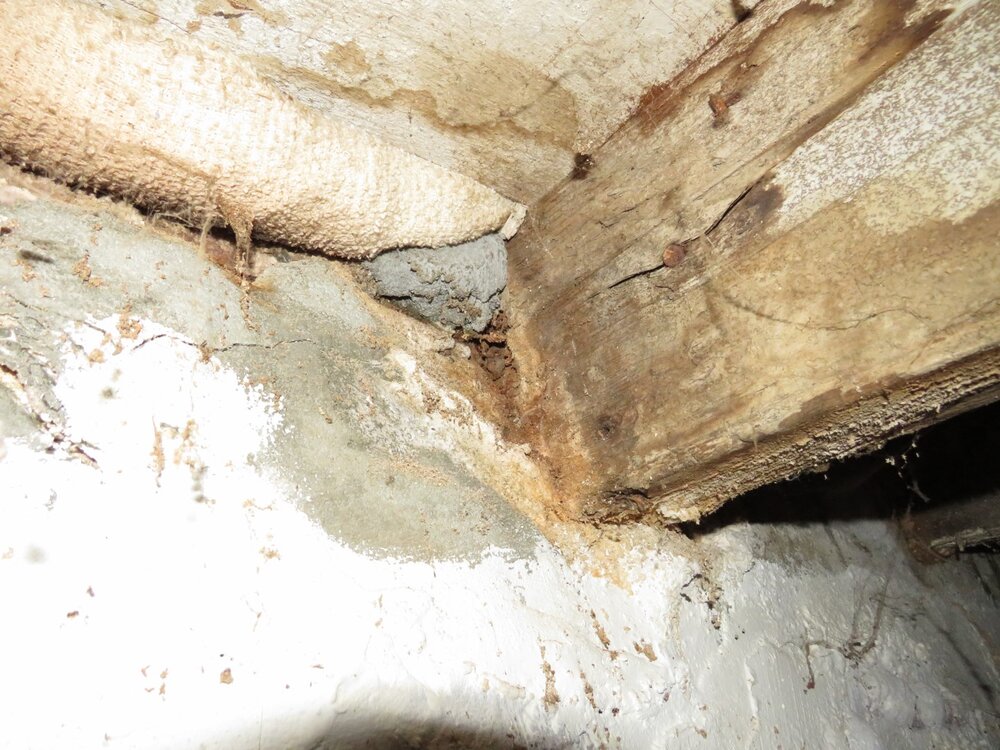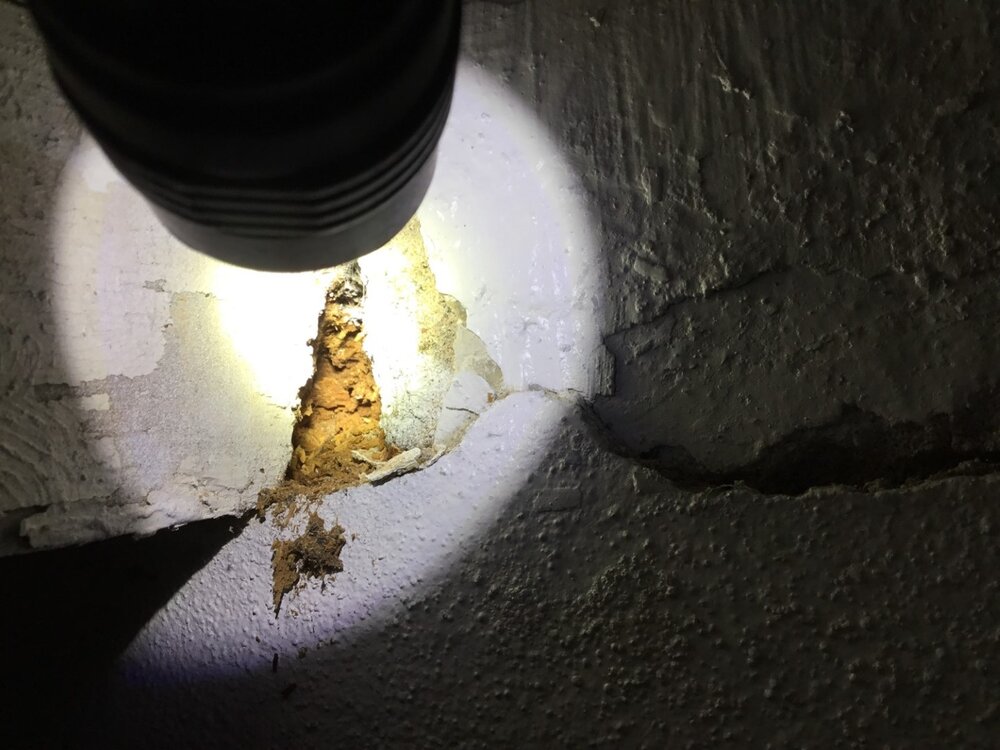Today I’m going to discuss rotted rim joist mysteries, and I’m going to introduce a term that I’ve never mentioned in this blog: beam fill. I wrote this blog post many years ago, but I never published it because I didn’t feel like I had the full story. I still don’t think I have the full story, even today, but too bad. I’m going to share what I know about beam fill and rotting rim joists at old houses.
Back in 2014, I did a home maintenance inspection on a 1920’s two-story stucco home in Minneapolis. The owner had lived in this home for many years and planned to stay for many more, so she hired me to inspect it to let her know about short-term and long-term projects she should plan for. These are called home maintenance inspections.
The foundation walls consisted of hollow-core blocks, and the tops of the block walls were covered with concrete, which sloped up toward the outside walls at approximately a 45-degree angle. This stuff is called “beam fill”. It was installed to help keep the house anchored to the foundation, and to help prevent the joists from rotating. If this stuff is installed all around the perimeter of the house, there’s no way that the framing could shift from the foundation.
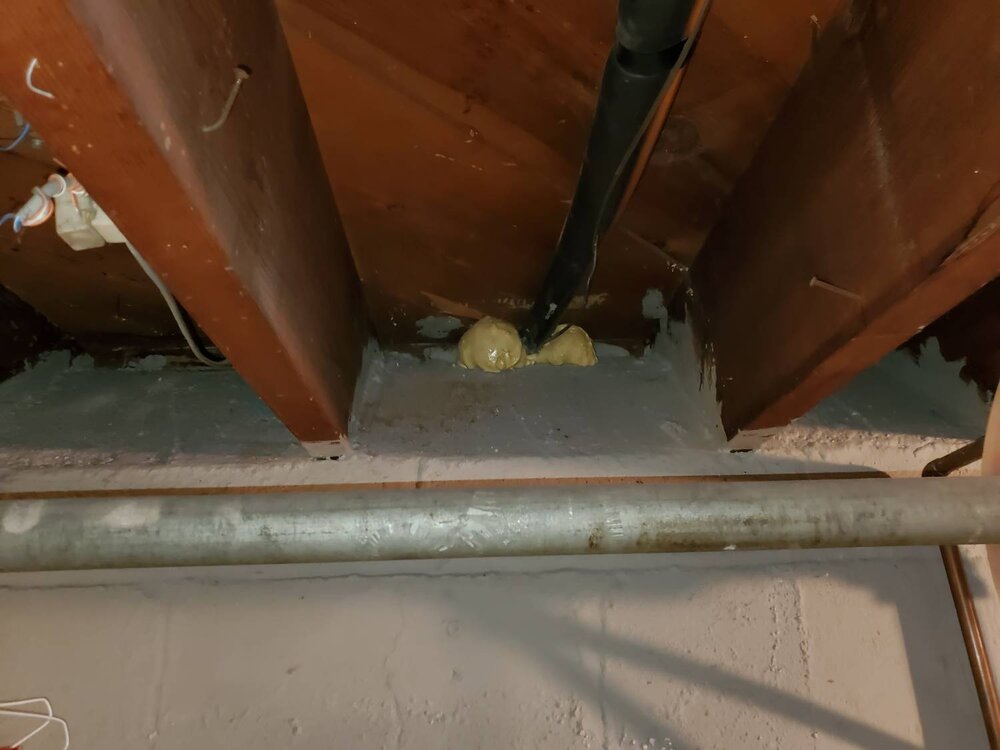
At the beginning of the inspection, the only big concern the owner expressed to me was that the contractor who had installed her combustion air intake told her she had rot at her rim joist. I told her I’d try to get to the bottom of it. The rim joist was insulated with fiberglass batts, which is a poor choice of insulation for a rim joist because it can lead to rotting. Check out my blog post from 2011 on rim joist insulation for more on that topic.
Wet Insulation
I pulled the fiberglass insulation away from the rim space in several areas to try to get a look at the rim joists, but the rim joists were completely concealed by the beam fill.
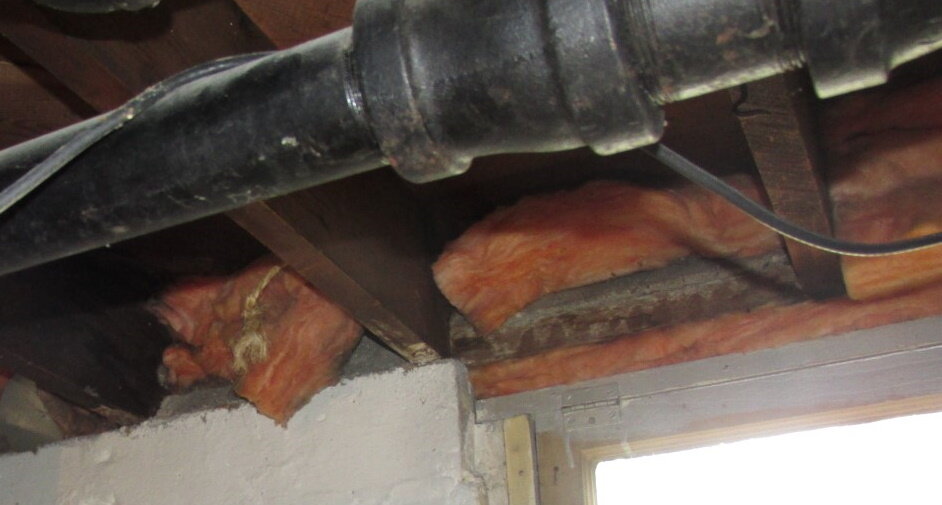
While messing with the fiberglass insulation, I happened to find a small section of fiberglass that was wet. I poked it with my moisture meter just to be sure.
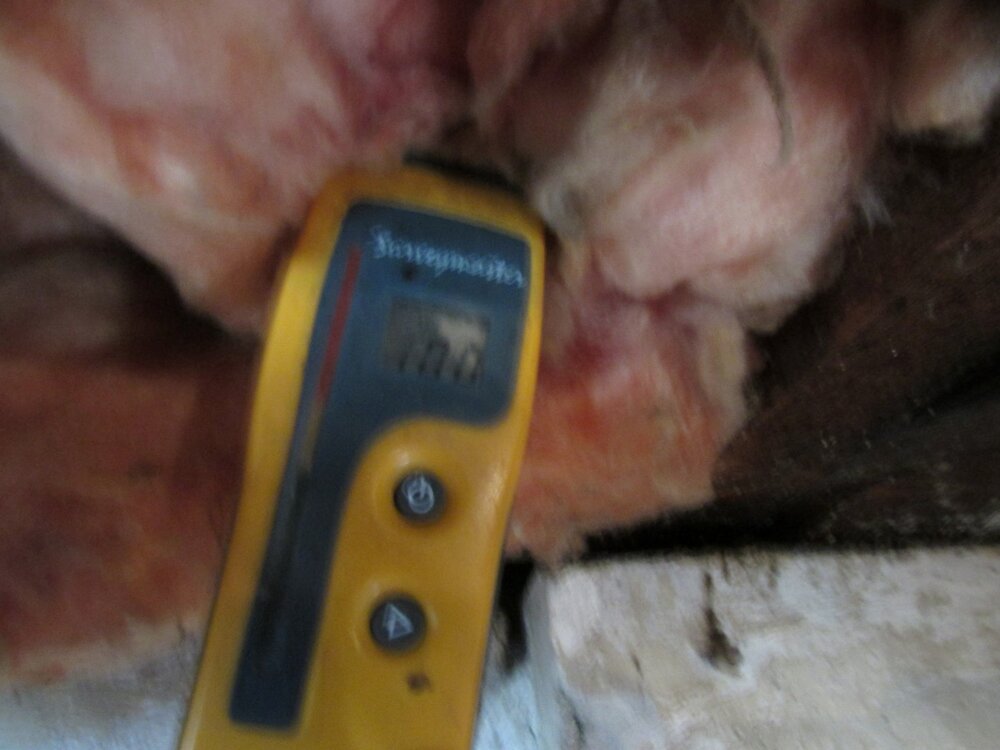
Yep. Definitely wet. Sorry for the fuzzy photo, but my moisture meter is displaying 100, which means it’s pegged. There was no logical reason for the insulation to be wet because there was no plumbing anywhere nearby, it wasn’t caused by a roof leak, and there were no windows above it. Puzzled, I grabbed my infrared camera and scanned a bunch of other rim joist areas. There were small wet sections of fiberglass insulation all over the place. The blue areas shown in the IR image below were wet. The warm area shown in the IR image was caused by me sticking my hand in there.
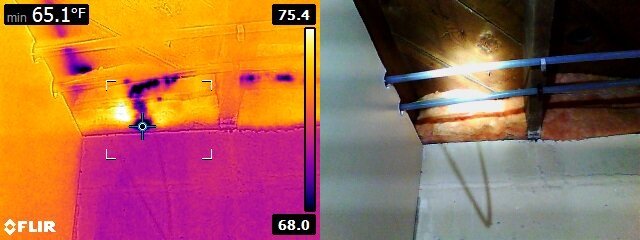
Carpenter Ants
There were carpenter ants present in the basement. All over the place.
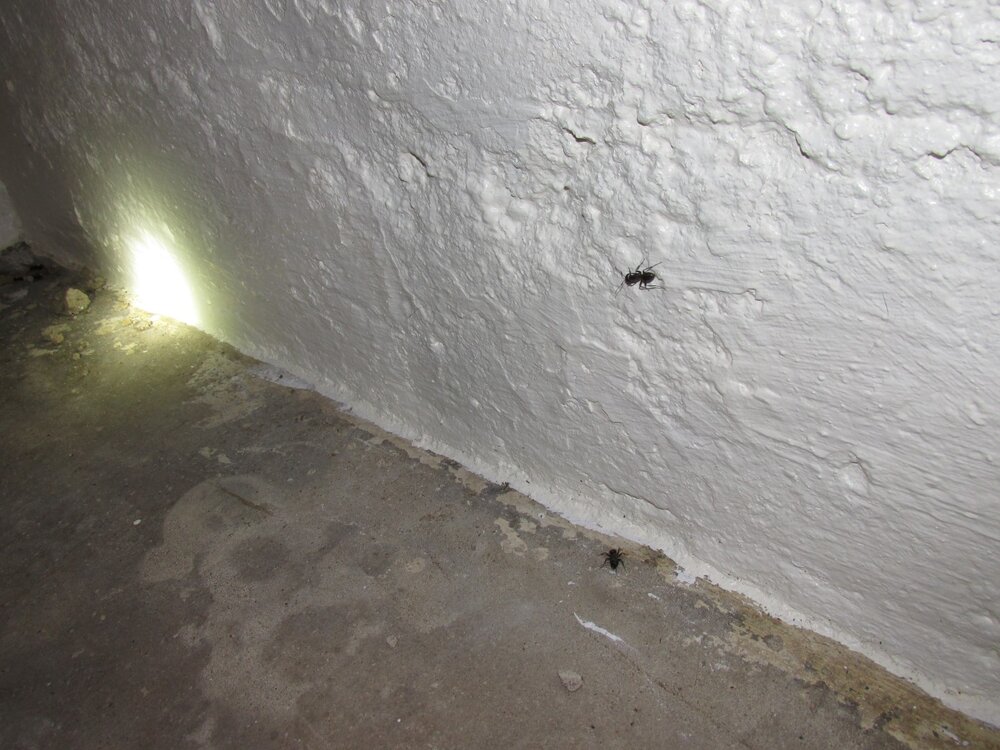
They say that when you see one, there are more. I don’t know what they say about finding them all over the basement, but I know it’s not good.
Water Test… Nothing.
I thought the problem might be the result of water leaking in through the exterior wall somehow, so I devised a little makeshift water test. I taped my garden hose to the side of the house and flooded a crack in the stucco with water for about a half-hour while I inspected the exterior. This revealed nothing. No water showed up inside the house at the beam fill.
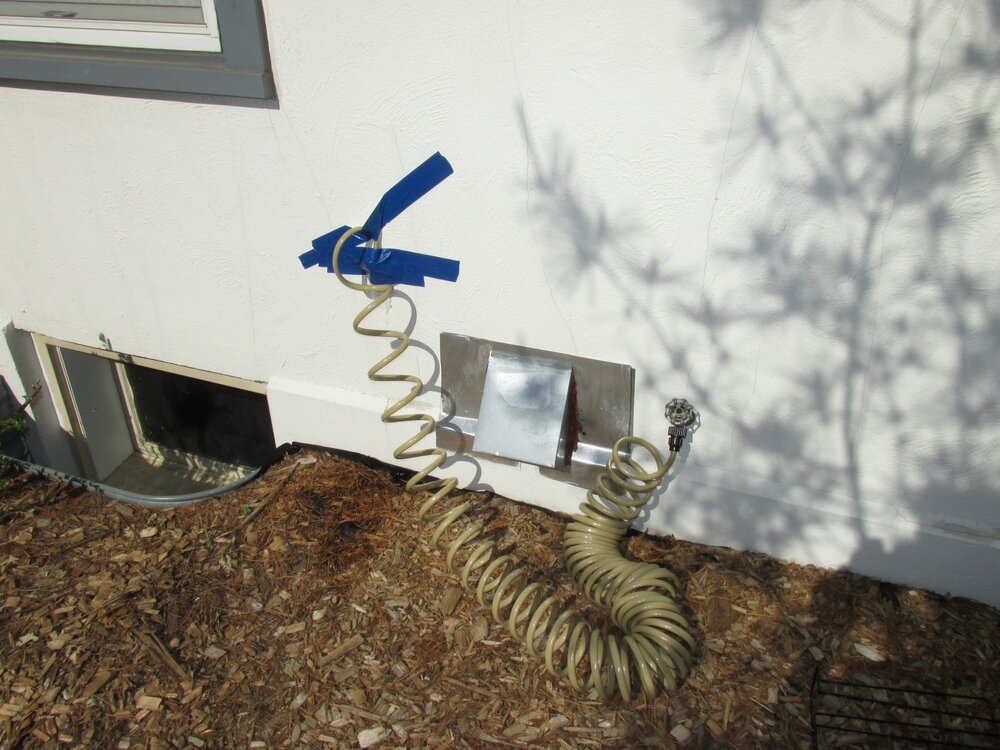
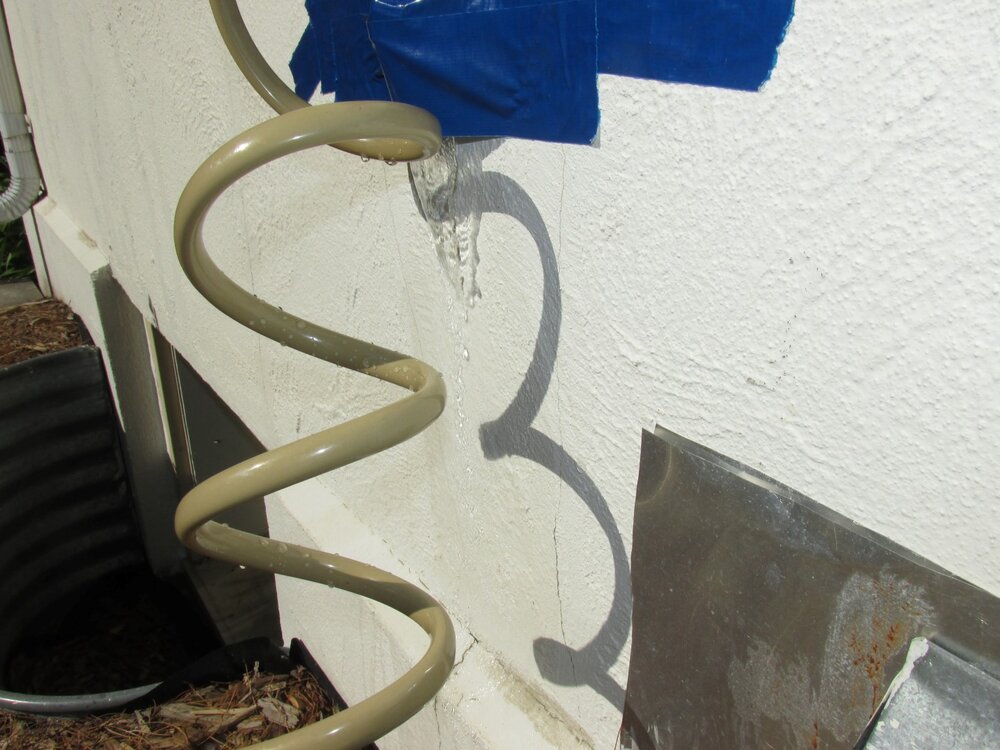
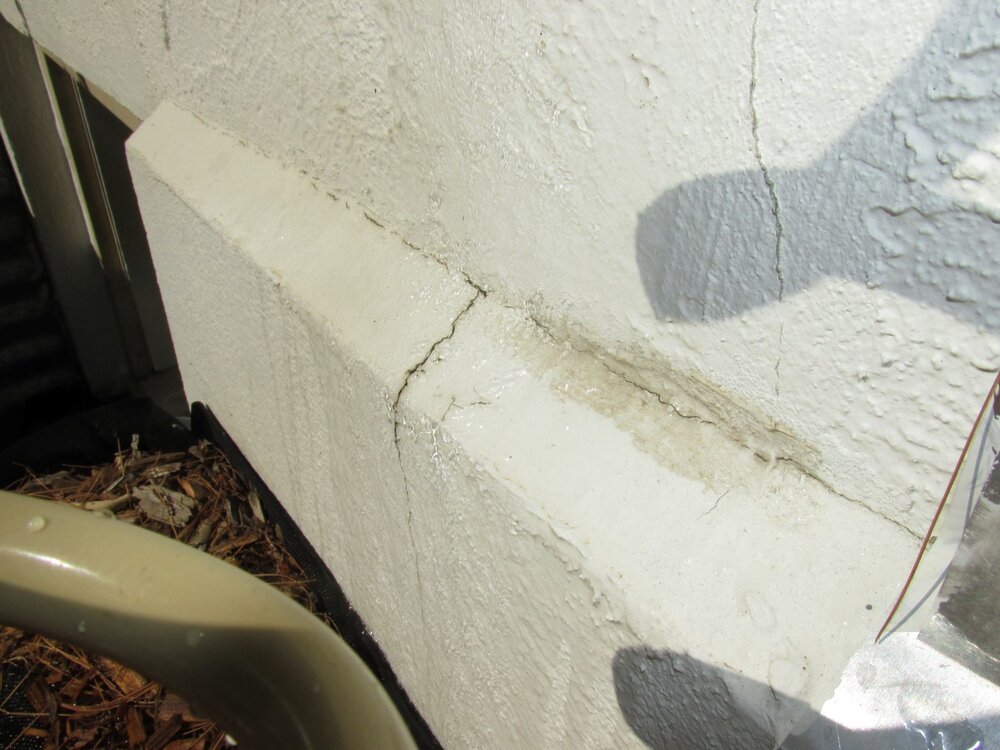
And for the record, I don’t normally do this kind of thing during a home inspection, nor do I advise it. This was just one of those situations where my ‘spidey senses’ were going nuts, and I had to get to the bottom of this. Mostly to satisfy my own curiosity.
So I Moved the Beam Fill
I went back inside, wedged my awl in at the bottom of the beam fill, cranked on it, and the beam fill came loose.
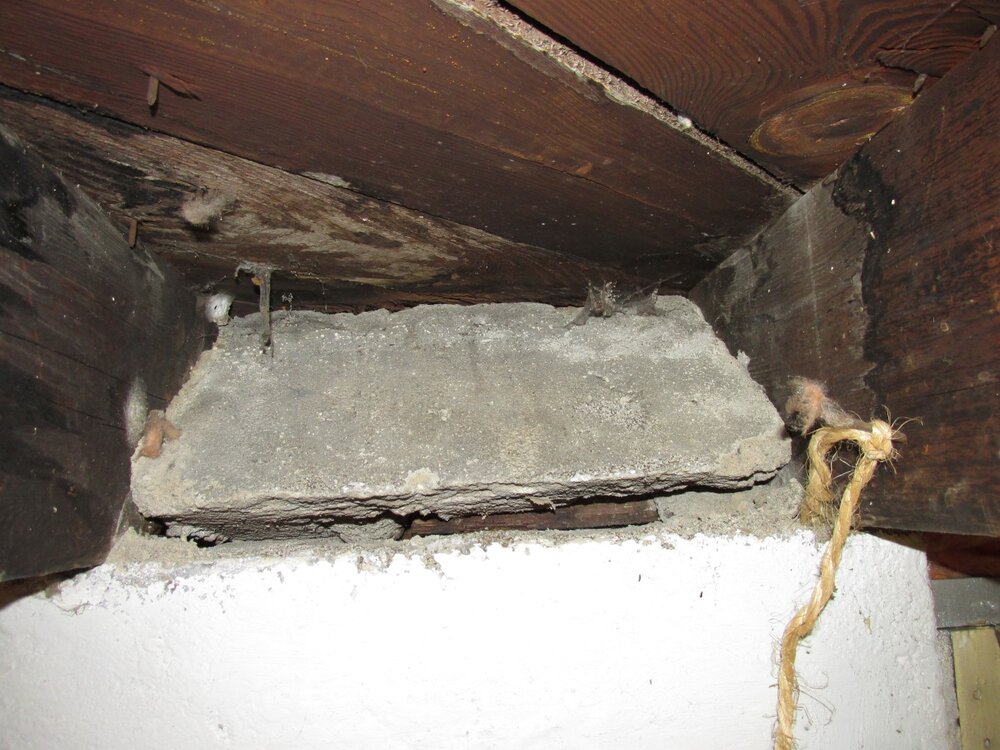
I considered getting a hammer and breaking it out, but that would have made too big of a mess. Besides, just moving the beam fill out of the way gave me a good look at the rim space. Can you guess what I found? The title of this post gives it away.
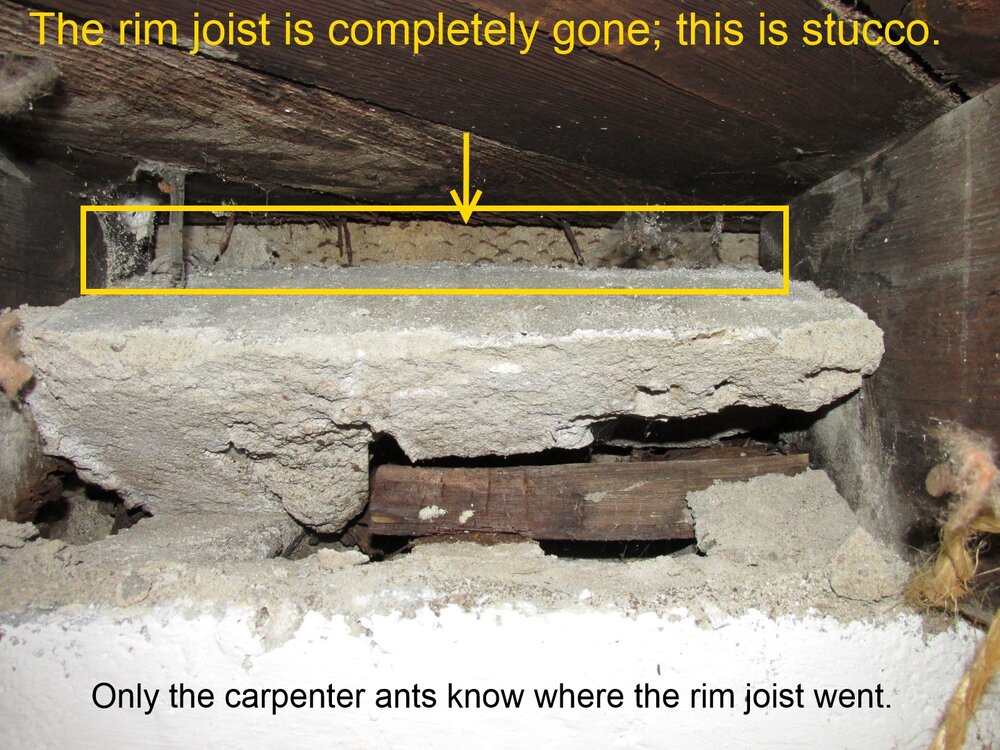
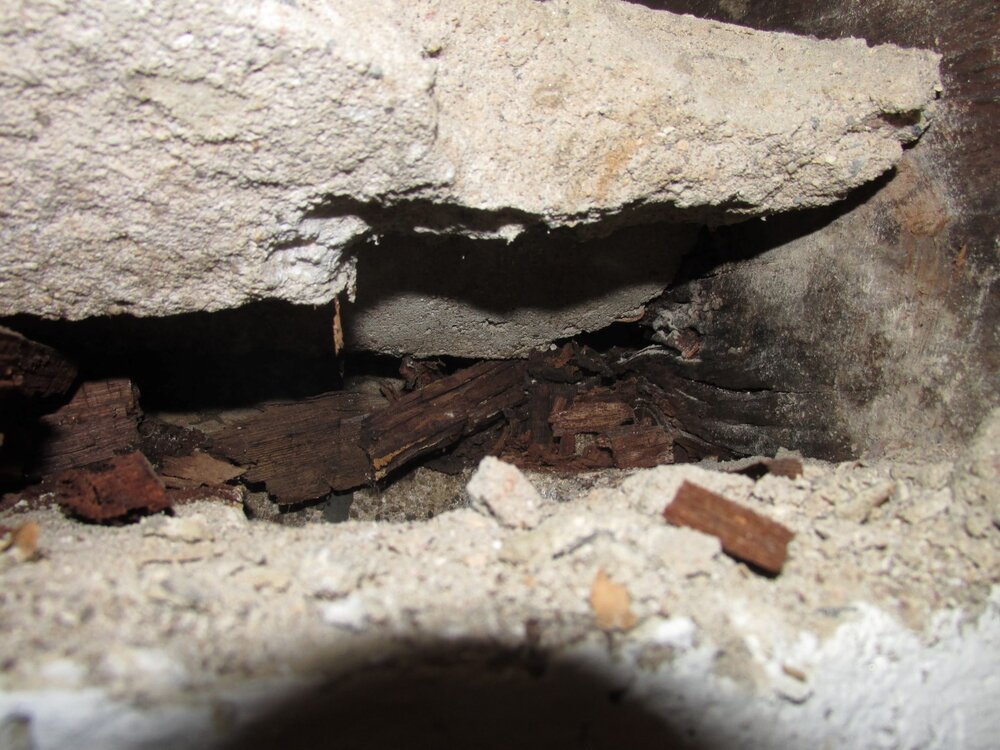
The rim joist was completely gone here, and the ends of the floor joists were also severely rotted. Those floor joists were rotted away to nothing below the beam fill, and they were also bone dry. There was nothing visible inside the house, save for some moisture staining at the edges of the joists. I probed the joists with an awl at several locations, and the exposed portions of the wood were rock solid. Then two inches in… gone.
This is the kind of stuff that scares me as a home inspector. If I had been inspecting this home for a buyer, there is no way on earth that I would have identified this issue.
So what caused the rot?
My theory is that moisture at the bottom of the hollow-core blocks rose up through the foundation and condensed at the wood all winter long, creating optimal conditions for rot. Once the wood was rotting, the carpenter ants were happy to take it from there. Would this have happened if the rim space wasn’t insulated with fiberglass batts? It’s impossible to know for sure, but the fiberglass insulation unquestionably made the rim space colder, which increases the potential for rotting. Again, that’s why rim spaces should never be insulated with fiberglass batts.
I asked many other home inspectors what they thought the issue could be, and there was no shortage of theories from some very smart people. Some of the theories included condensation, water wicking up from the stucco that was terminated in the ground, leaking at the stucco from the exterior, and maybe even leaks from ice dams. That was six years ago. Today, I still don’t have a conclusive answer.
Conclusion
While I’m not positive about what caused the rot, I am sure that beam fill at rim areas can cause problems. The homeowner didn’t replace the rotted rim joists, but she did have the rotted floor joists sistered along one wall, for a cost of approximately $3,800.
When a home inspector inspects an old house with beam fill at the rim area, they would do well to pay extra attention to the rim area. They should set aside a few minutes to methodically walk the entire perimeter of the foundation, poking and prodding the floor joists where they disappear into the beam fill. If any soft floor joists are found, this would warrant further inspection to determine the extent of the damage.
And for goodness sake, don’t ever put fiberglass batts up against beam fill. You’re just begging for a problem.
And just for fun, here are a few more photos of beam fill with deteriorated joists.
